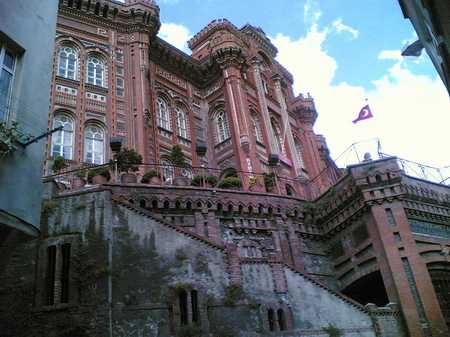“We will destroy half of Istanbul’s buildings,” said Turkish Prime Minister Erdoğan recently. The words are aimed at the semi-legal housing that has mushroomed within many quite central neighbourhoods of Istanbul in the last 30-40 years: Gültepe, Sulukule, Dolapdere, Tarlabaşı, and Kurtuluş to mention a few.
Such houses are about to be eliminated in a big governmental sweep-out of the shadow housing economy. Certain areas – those with a potential to become new tourism magnets, finance centres or other up-scale markets in this rapidly growing megacity – are being brushed up. Old buildings, either wooden houses or small apartments from the first decades of the 20th century, are also targeted by officials who seek to destroy them only to be rebuilt as posh and fake copies of their old selves. Not surprisingly, most inhabitants of these houses are poor, having migrated from rural regions due to unemployment or conflicts in the Kurdish parts of the country.
Fener-Balat is an obvious target area. Centrally located on the coast of the Golden Horn, the area features picturesque, historical houses, a sea view and several remains from the Ottoman past. It was here, on invitation from Sultan Bayezid II, that Sephardic Jews persecuted in Spain and Portugal during the 16th century originally settled and established trade businesses. Although these Jewish, and later Christian, settlers have greatly disappeared by now, one can still discover remaining synagogues and many orthodox churches. The Greek-Orthodox patriarchate is still located here. These historic places of worship are scattered around the area’s mosques, testifying to the district’s multicultural past.
The unique historical and religious atmosphere has fusioned with migrants from rural Black Sea and south-eastern regions who have moved to Balat, carrying with them their own ways of life. There is a distinct village feel to the neighbourhood: extended families often hang out on the doorsteps, chicken and children run freely on the dirty cobblestones, and gossip goes around about the latest neighbourhood news. Women are mostly at home during the day, taking care of the households that often lodge several generations. Many of them never get out of the neighbourhood, except for going to spend the summers in their home villages.
These homelands are remembered with great nostalgia: havens of clean air and abundance of greenery as opposed to Istanbul’s endless concrete environment. Many people who live here have a longing to such native plains and mountain plateaus. Nevertheless, the streets of Balat are dense with a personality of their own, and a strong sense of locality. The families moved here in search of jobs, something that binds them to the city: the men work long hours as coolies, street vendors, workshop workers and drivers. Their income level is among the lowest in town and they work without insurance (which means that the whole family is uncovered) or security for their future.

The talk about an urban transformation of the area has been going on for over a decade, but without much happening. The 2003-2007 so-called “rehabilitation project” of the neighbourhood, supported by the Fatih Municipality and the European Union brought some changes, but hasn’t affected the big majority in a dramatic way. We will probably see more concrete moves within 2012. For the people of Balat, they still live in doubt about the future of their houses and livelihoods. This atmosphere of uncertainty is portrayed in photojournalist Fatih Pinar’s video.
Text by Lea Svane.
via Mashallah News → Fener-Balat in Danger.

Leave a Reply